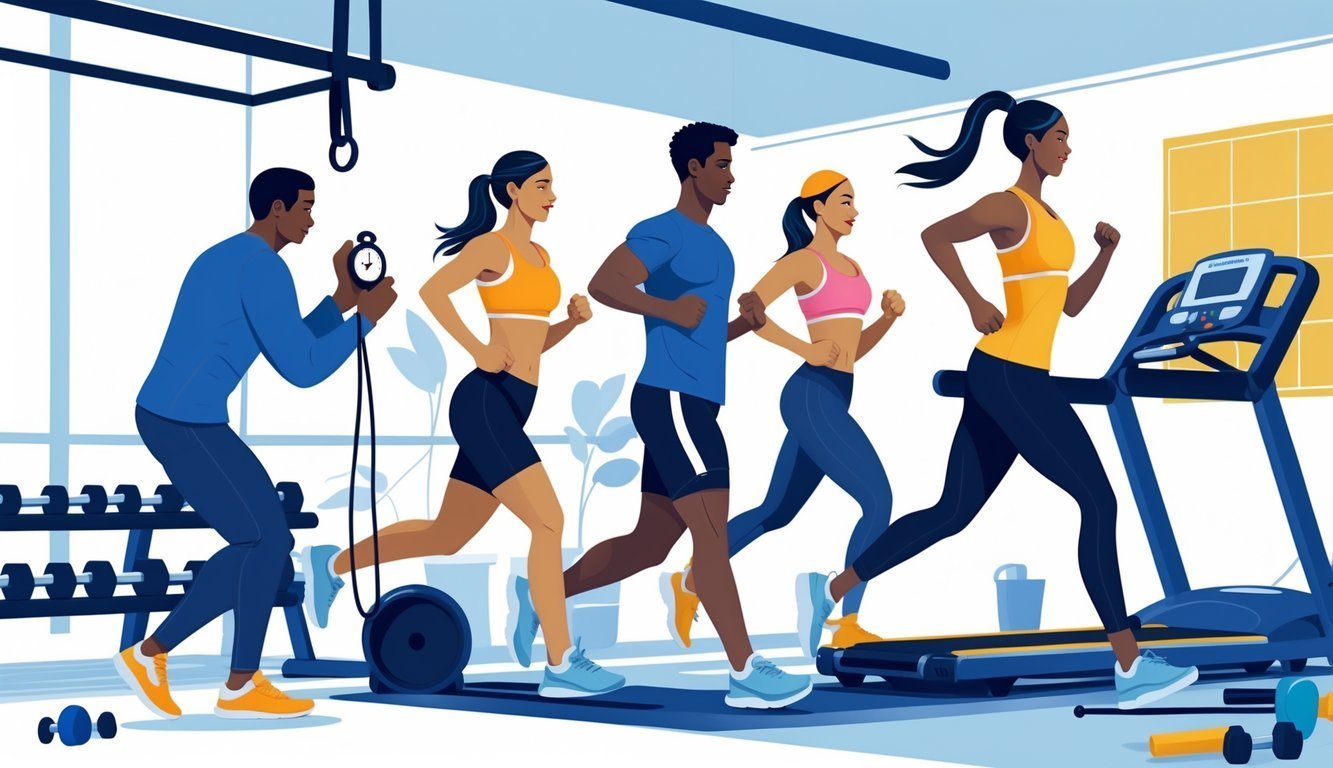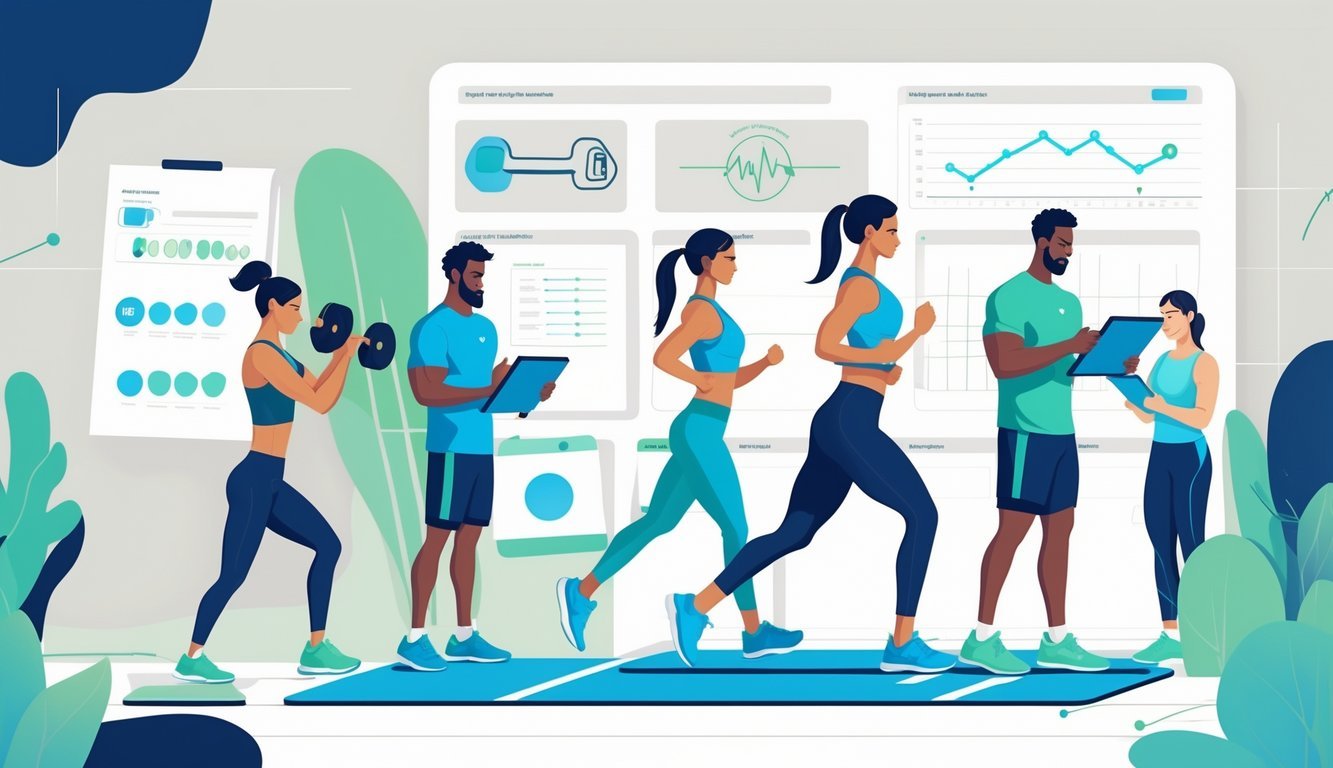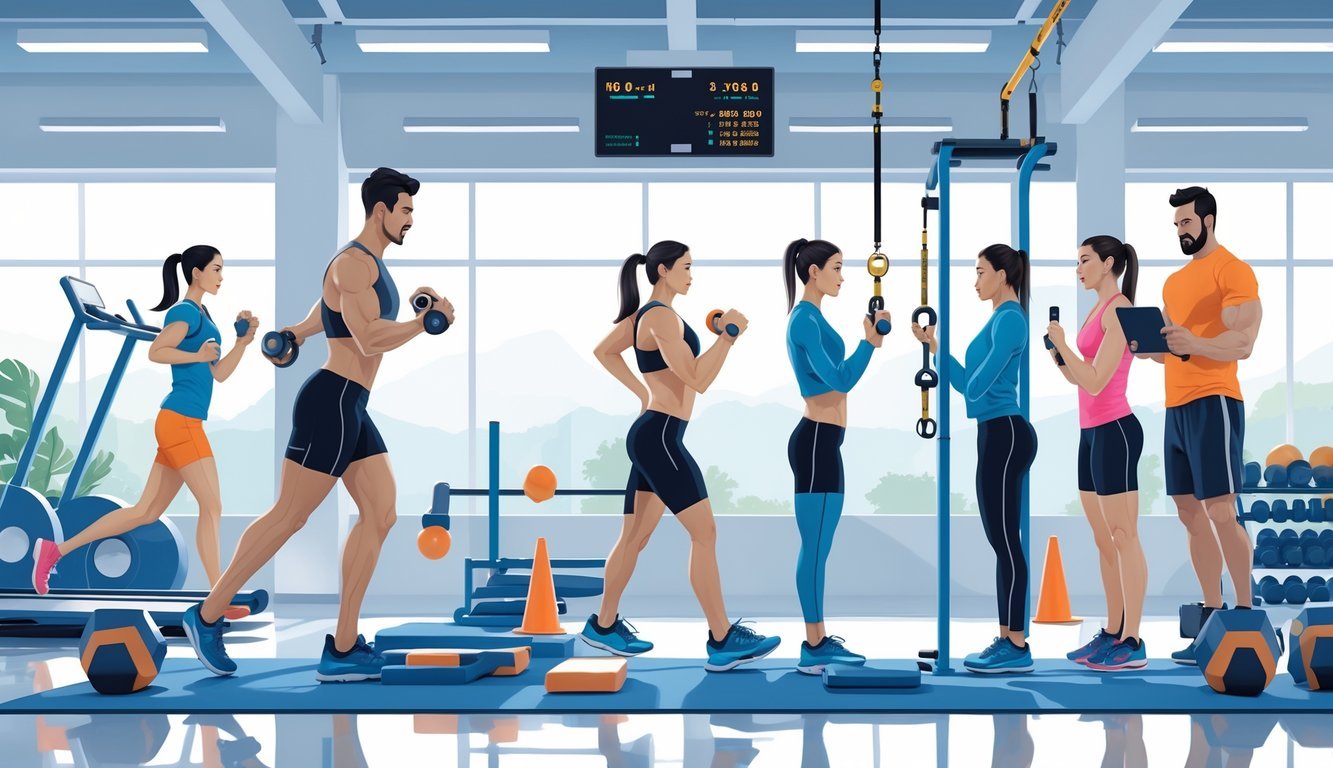PsychNewsDaily Publishers
100 Summit Drive
Burlington, MA, 01803
Telephone: (320) 349-2484
PsychNewsDaily Publishers
100 Summit Drive
Burlington, MA, 01803
Telephone: (320) 349-2484
Fitness testing measures strength, endurance, flexibility, and body composition through various exercises. These assessments help individuals set realistic goals and track their health progress.

Fitness standards and testing give you a way to check how healthy and strong you are. These standards set out clear goals for strength, endurance, and overall fitness.
When you know your fitness level, you can track your progress and set goals that actually make sense for you.
You can use different types of tests, like push-ups, sit-ups, or running, to measure your abilities. These tests are simple and show you how your body works, plus what you might want to work on next.
A lot of programs, including the military and law enforcement, rely on these tests to keep people in shape.
Once you know about fitness tests, you can use them to build better habits and a stronger body. And honestly, you don’t have to be an athlete—anyone can use these tests to find out where they stand and get fitter in a way that fits their life.

Fitness standards and testing measure things like strength, endurance, and aerobic capacity. These areas show you where you stand and help guide your workouts.
They also help protect your health by pointing out risks and tracking your improvements.
Fitness testing lets you see how your body performs in a few key areas. You’ll learn about your strength, endurance, flexibility, balance, and aerobic fitness.
With this info, you can set clear fitness goals and make your workouts more effective.
Tests help spot weaknesses that could cause injuries. That’s why trainers and health pros often start with some assessments before you jump into a new routine.
Fitness assessments give you normative data so you can compare your results with others in your age group or with similar health backgrounds.
It’s a helpful way to see if you need to focus on certain areas.
Your fitness comes down to several parts that work together. Here’s what matters:
Fitness tests usually check these with exercises like push-ups, sit-ups, chin-ups, or timed runs.
These moves give trainers a good look at your overall health and fitness level.
Organizations like the National Heart, Lung, and Blood Institute and the Mayo Clinic use fitness standards to build tests that fit your goals. Here are some common ones:
| Test Type | What it Measures | Example Exercise |
|---|---|---|
| Strength | Muscular strength/endurance | Push-ups, chin-ups |
| Aerobic endurance | Heart and lung fitness | 1-mile run, step test |
| Flexibility | Range of motion | Sit-and-reach test |
| Balance and agility | Coordination | Timed obstacle courses |
These tests help you personalize your workouts and keep tabs on your progress. Using fitness assessments regularly helps you stay on track and make changes when you need to.

To really understand your fitness, you’ve got to look at different parts of your body’s abilities. Tests focus on your heart and lung power, muscle strength, flexibility, and body fat.
Each test helps you spot what you’re good at and where you could use some work.
These tests look at how well your heart, lungs, and muscles work together during things like running, walking, cycling, or swimming.
The goal is to check your aerobic fitness and how long you can go before you’re wiped out.
You might try the Cooper Test, where you run or walk as far as you can in 12 minutes. Or maybe the VO2 max test, which checks the most oxygen your body can use during hard exercise.
Some people check their resting heart rate or count their pulse during and after exercise. Simple tools like a stopwatch or metronome keep timing on point.
These tests reveal how long you can keep moving and help you plan better workouts.
Strength tests check your muscle power and endurance in different parts of your body. You might do push-up tests, pull-ups, chin-ups, or classic weightlifting moves like the bench press, squats, and lunges.
You’ll get a sense of your upper-body strength and how long your muscles can last. Counting how many push-ups you can do in one go, for example, shows how strong your arms, chest, and shoulders are.
Some tests, like the vertical jump, check explosive power in your legs.
Strength tests help you see your progress and avoid injuries by knowing your limits.
Body composition tests check how much fat, muscle, and bone you have. They tell you if you’re carrying a healthy amount of fat for your goals.
You can use a scale for weight, a measuring tape for waist size, or skinfold measurements with calipers to check fat under your skin.
Some machines use bioelectrical impedance analysis to estimate body fat by sending a tiny electrical signal through your body.
A quick option is Body Mass Index (BMI), which uses your height and weight to guess if your weight is healthy.
Measuring body composition helps you set real goals for losing fat or gaining muscle.
These tests show how well your joints move and how steady you are, which matters for avoiding injuries and just getting through your day.
The sit and reach test checks how far you can stretch forward, which tells you about your lower back and hamstring flexibility.
For shoulders, the zipper test asks you to touch your fingers behind your back.
Balance tests might have you stand on one foot or walk heel-to-toe to see if you can stay steady.
Mobility tests look at how well your joints move through their full range. The Senior Fitness Test has simple moves to check balance and mobility for older adults.
Even dance or rhythmic movements can test balance and coordination.
These assessments highlight where you might need more stretching, balance work, or movement practice.

Physical fitness tests check things like strength, endurance, and body composition. The standards might change depending on your age or where you live.
Knowing what’s expected helps you prep and makes sense of your results.
You’ll usually get tested on aerobic capacity, muscle strength, muscle endurance, flexibility, and body composition. Sometimes, tests also check specific skills if that’s the goal.
Fitness standards shift with age. Younger folks usually have higher targets for strength and endurance, while standards for older adults take natural changes into account.
You’ll need to hit minimum scores in areas like aerobic capacity, body composition, muscle strength, and flexibility. Each category sets different levels based on your age and gender.
The Healthy Fitness Zone means you’ve reached a certain level of aerobic capacity, as shown by your shuttle run score. This zone changes with age and gender, and it shows you’re at a fitness level that supports good health.
The seven components are: cardiovascular endurance, muscular strength, muscular endurance, flexibility, body composition, agility, and balance. These cover the basics for measuring your overall physical health.
Most fitness test batteries throw in push-ups, sit-ups or curl-ups, a run or shuttle run for aerobic fitness, flexibility tests like the sit-and-reach, and some kind of body composition measurement.
These tests cover strength, endurance, agility, and overall health.